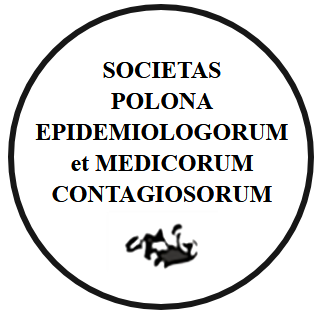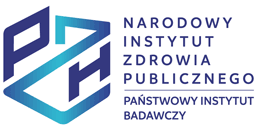RESEARCH PAPER
Chickenpox in Poland in 2022
1
Zakład Epidemiologii Chorób Zakaźnych i Nadzoru,
NIZP PZH – PIB
2
Zakład Epidemiologii Chorób Zakaźnych i Nadzoru, NIZP PZH – PIB
These authors had equal contribution to this work
Submission date: 2024-07-23
Final revision date: 2024-09-06
Acceptance date: 2024-11-08
Online publication date: 2024-11-12
Publication date: 2024-12-10
Corresponding author
Jakub Maciej Zbrzeżniak
Zakład Epidemiologii Chorób Zakaźnych i Nadzoru, NIZP PZH – PIB, Chocimska 24, 00-791, Warszawa
Zakład Epidemiologii Chorób Zakaźnych i Nadzoru, NIZP PZH – PIB, Chocimska 24, 00-791, Warszawa
Przegl Epidemiol 2024;78(3):351-358
KEYWORDS
TOPICS
ABSTRACT
Introduction: Chickenpox is an infectious disease caused by the Varicella-zoster virus, usually affecting children. It is characterized by a rash with rapid seeding of small red papules. The course of the disease is mild, but in people with weakened immunity it may be severe. Objective: The aim of the study was to assess the epidemiological situation of chickenpox in Poland in 2022 compared to the situation in previous years. Material and Methods: Data from epidemiological surveillance, including mandatory reporting of cases by physicians, were used to assess the epidemiological situation of chickenpox in Poland. Results: In 2022, 171 708 cases of chickenpox were recorded, of which 87.5% were children under 9 years old. Hospitalization due to chickenpox was not one of the most common, the percentage of hospitalized cases oscillated between 0.12% and 1.24% depending on the voivodeship. Analyzing the incidence for the whole of Poland for the last 10 years, we see a drastic decrease from 470.6 in 2019 to 186.6 in 2020 and another decrease in 2021 to 151.1 per 100 000, to then return to an incidence of 453.9 in 2022. Conclusion: The incidence of chickenpox in 2022 returned to pre-pandemic levels, similar to those seen in 2016-2018. Despite preventive measures taken throughout the pandemic, significant incidence was observed, underlining the key role of vaccination in preventing this disease. The use of a quadrivalent vaccine against rubella, measles, mumps, and varicella could help reduce the costs associated with chickenpox, with a small increase in the costs of the vaccination program.
FUNDING
The work was carried out as part of task No. BE-1/2024
We process personal data collected when visiting the website. The function of obtaining information about users and their behavior is carried out by voluntarily entered information in forms and saving cookies in end devices. Data, including cookies, are used to provide services, improve the user experience and to analyze the traffic in accordance with the Privacy policy. Data are also collected and processed by Google Analytics tool (more).
You can change cookies settings in your browser. Restricted use of cookies in the browser configuration may affect some functionalities of the website.
You can change cookies settings in your browser. Restricted use of cookies in the browser configuration may affect some functionalities of the website.





